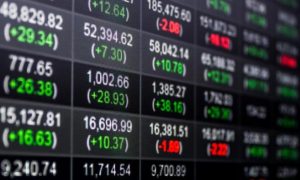March came in like a lion, as bank woes sent the markets lower. But they recovered, and the Dow Jones Industrial Average actually finished the month up 1.9%.
One of the hardest-hit stocks on the Dow Jones Industrial Average in March was indeed a bank, as JPMorgan Chase (NYSE: JPM) fell 7.7% in the month. But it was not the worst performer on the Dow — that would be Caterpillar (NYSE: CAT), a manufacturer of farm and construction equipment and machinery, which was down 9.2% in March.
Read More:- 8 Ways To Make $200 in Just a Day
Let’s take a look at these two March basement dwellers to see what caused the drop and if they are worth an investment now.
A difficult cycle for Caterpillar
Caterpillar had a rough month, but overall, the stock looks pretty good if you look at some of the key metrics.
Revenue was up 20% in the fourth quarter and 17% in full-year 2022, year over year. Profit per share was down about 8.7% to $12.64 per share, mainly due to a $0.41-per-share foreign-currency impact from machine, energy, and transportation (ME&T) expenses. This is compared to a $0.01-per-share impact in the fourth quarter of 2021.
Higher provision for credit losses also had a drag on earnings. Further, its operating margin is now at 16.4%, up from 10.1% at the end of the fourth quarter.
Overall, the stock had a comparatively great year in 2022, up 18.6% for the year, compared to the S&P 500, which was down about 19% last year.
Also Read- Personal Use of Company Vehicle: What You Need to Know for Tax Purposes
The March swoon likely had to do with some analysts downgrading the stock. UBS analyst Steven Fisher downgraded it to sell, with a price target of $225 (it is currently trading at $218 per share). He cited an expectation for earnings to shift downward in a potential economic slowdown, which is at odds with its slightly elevated valuation, as Caterpillar has a price-to-earnings (P/E) ratio of 17.4, up from 13.1 in September.
Also, Baird downgraded it to underperform, with a price target of $185. Analyst Mircea Dobre cited a slowdown in U.S. nonresidential construction, exacerbated by issues facing regional banks that could impact commercial construction lending. The analyst expects that Caterpillar is “nearing a cyclical pivot point,” reported The Fly.
A bad month for banks
Banks were the worst performers in March, as most of them were brought down by the crisis that caused the Federal Deposit Insurance Corp. (FDIC) to take over Silicon Valley Bank (part of SVB Financial) and Signature Bank after they had a run on deposits.
Also Read– 5 businesses you can start from home with little or no money
The issues that brought down SVB and Signature, and severely impacted other midsized and regional banks, don’t really apply to big banks like JPMorgan Chase, the largest bank in the U.S. The failed banks were a victim of a high level of uninsured deposits, as well as liquidity issues.
These are not concerns for JPMorgan Chase, which is known for its fortress balance sheet, and is highly regulated by the Dodd-Frank Act. Large banks like JPMorgan are forced to have stress tests and meet liquidity requirements to ensure that they can weather a major economic or market shock. Small and midsized banks are not subject to the same requirements.
While the March bank sell-off did impact JPMorgan Chase, the crisis also had some benefits. Specifically, many of the deposits that were withdrawn from SVB, Signature, and other smaller banks amid the panic were brought to JPMorgan Chase and other megabanks in a flight to stability. Sources indicated that JPMorgan Chase got the majority of the migrating deposits.
Read More:- Here’s what Biden’s 1% buyback tax has done to stock prices so far in 2023
Are these two stocks buys?
Of the two, JPMorgan Chase is the better long-term buy right now. Caterpillar has a slightly elevated valuation and some potential economic headwinds that could impact earnings.
The big issues on the horizon for JPMorgan Chase is a recession or economic slowdown, which would impact its lending, which has remained fairly robust, despite the environment of high inflation and rising interest rates. That could take a hit if the country goes into recession.
High interest income has buoyed JPMorgan Chase over the past year, offsetting losses in the investment banking and asset management businesses. But if lending activity drops in a recession, that would impact JPMorgan Chase’s earnings.
Read More:- How a HELOC can advance your business
Both are solid long-term stocks, which are leaders in their respective industries. But JPMorgan Chase is available right now at a better valuation, with a P/E ratio of around 10. While economic uncertainty is a concern, JPMorgan Chase is a stellar bank stock, with tons of liquidity, a high 38% operating margin, and long-term earnings power. It is pretty much always a buy, in my book, but at its lower current valuation, it looks even better.
JPMorgan Chase will report first-quarter earnings on April 14, so stay tuned for more insight into how it navigated the banking crisis and its outlook.





































